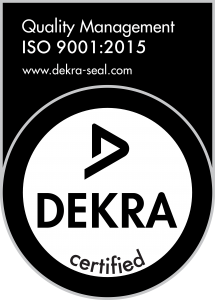860-829-2244
Jeanett Trugernanner
@jeanett2996
Profile
Registered: 3 days, 16 hours ago
Best Practices for Implementing Scalable Database Solutions
Whether or not you are creating a mobile app, an eCommerce platform, or enterprise software, scalability ensures your database handles growing workloads seamlessly. To future-proof your system, listed here are the perfect practices for implementing scalable database solutions.
1. Select the Proper Database Type
The foundation of a scalable database starts with choosing the best type. Relational databases like MySQL and PostgreSQL are excellent for structured data and sophisticated queries. Nevertheless, NoSQL databases resembling MongoDB, Cassandra, and DynamoDB offer flexibility and horizontal scaling supreme for unstructured or rapidly altering data.
In case your application includes social media feeds, real-time analytics, or IoT, NoSQL databases are sometimes a better fit. For transactional systems like financial apps or stock management, relational databases provide consistency and reliability.
2. Design with Scalability in Mind
Database scalability must be part of the architecture from day one. Normalize your data to reduce redundancy, but be mindful of performance. In some cases, denormalization can speed up read-heavy workloads.
Keep away from tight coupling between components and use microservices architecture when possible. This enables individual services to scale independently, reducing pressure on the database.
3. Implement Horizontal Scaling
Vertical scaling (adding more energy to a single server) has its limits. Horizontal scaling, the place you distribute the load throughout a number of servers, offers better long-term flexibility. Sharding—dividing your database into smaller, more manageable pieces—is a typical approach.
When implementing sharding, choose a proper shard key that evenly distributes the data and minimizes cross-shard queries. Tools like Amazon Aurora or Google Cloud Spanner supply constructed-in horizontal scaling for each SQL and NoSQL models.
4. Use Caching to Reduce Load
Caching ceaselessly accessed data can significantly reduce the strain on your database. Tools like Redis and Memcached store copies of data in memory, allowing applications to retrieve information much faster.
Place caches between your application and database for optimum performance. However, be sure that your cache invalidation strategies are stable to stop serving outdated or incorrect data.
5. Monitor and Optimize Queries
Scalable databases want optimized queries. Poorly written SQL can degrade performance, even on sturdy systems. Often analyze query performance with tools like EXPLAIN plans or profiling utilities to identify slow operations.
Avoid SELECT *, use indexes properly, and reduce the usage of nested subqueries. Database optimization is an ongoing task that turns into even more necessary because the system scales.
6. Employ Automated Backups and Disaster Recovery
Scalability isn’t just about performance—it’s additionally about reliability. Automated backups and a well-tested disaster recovery plan are crucial for scalable systems. Guarantee backups happen without impacting performance and test restoration procedures regularly.
Use database replication to keep live copies of data in different regions or availability zones. This additionally adds redundancy and improves read performance in international applications.
7. Incorporate Load Balancing
Load balancing distributes database site visitors to forestall any single node from being overwhelmed. Use load balancers in conjunction with duplicate sets or clusters to direct queries efficiently.
This also helps in maintaining uptime during upkeep or node failures. Most cloud providers supply built-in load balancing for managed database services.
8. Keep Cloud-Native
Cloud platforms provide scalability without the hardware headache. Options like Amazon RDS, Azure SQL Database, and Google Cloud Firestore provide automated scaling, backups, and monitoring out of the box.
By adopting cloud-native databases, teams can focus more on development and less on infrastructure management. Additionally, many provide autoscaling capabilities, ensuring you only pay for the resources you use.
Implementing scalable database solutions is essential for sustainable progress in any modern application. From choosing the proper database to fine-tuning queries and leveraging cloud-native services, every step plays a vital role in maintaining performance and reliability. Start with a solid foundation and continue optimizing as your system evolves to ensure long-term success.
Should you cherished this information and also you would want to be given more details concerning AI-Optimized Databases kindly check out our web page.
Website: https://datamam.com/embedded-databases-development/
Forums
Topics Started: 0
Replies Created: 0
Forum Role: Participant

